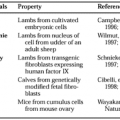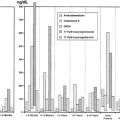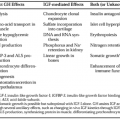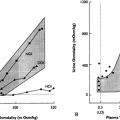TARGET CELL CONCEPT
Part of “CHAPTER 4 – HORMONAL ACTION“
There are ˜200 types of differentiated cells in humans. Only a few produce hormones, but virtually all of the 75 trillion cells in a human body are targets of one or more of the ˜50 known hormones. The concept of target cells is undergoing redefinition. It was thought that hormones affected a single cell type, or only a few kinds of cells, and that a hormone elicited a unique biochemical or physiologic action. For example, it was presumed that thyroid-stimulating hormone (TSH) stimulated thyroid growth and thyroid hormonogenesis; adrenocorticotropic hormone (ACTH, also called corticotropin) enhanced growth and function of the adrenal cortex; glucagon increased hepatic glucose
production; and luteinizing hormone (LH) stimulated gonadal steroidogenesis. However, these same hormones also stimulate lipolysis in adipose cells.15 Although the physiologic importance of this effect is unclear, the concept of unique sites of actions of these hormones is untenable. A more relevant example is that of insulin, which effects various responses in different cells and occasionally influences different processes within the same cell. It enhances glucose uptake and oxidation in muscle, lipogenesis in fat, amino acid transport in liver and lymphocytes, and protein synthesis in liver and muscle. These and other examples necessitated a reevaluation of the target cell concept.
production; and luteinizing hormone (LH) stimulated gonadal steroidogenesis. However, these same hormones also stimulate lipolysis in adipose cells.15 Although the physiologic importance of this effect is unclear, the concept of unique sites of actions of these hormones is untenable. A more relevant example is that of insulin, which effects various responses in different cells and occasionally influences different processes within the same cell. It enhances glucose uptake and oxidation in muscle, lipogenesis in fat, amino acid transport in liver and lymphocytes, and protein synthesis in liver and muscle. These and other examples necessitated a reevaluation of the target cell concept.
Stay updated, free articles. Join our Telegram channel

Full access? Get Clinical Tree








